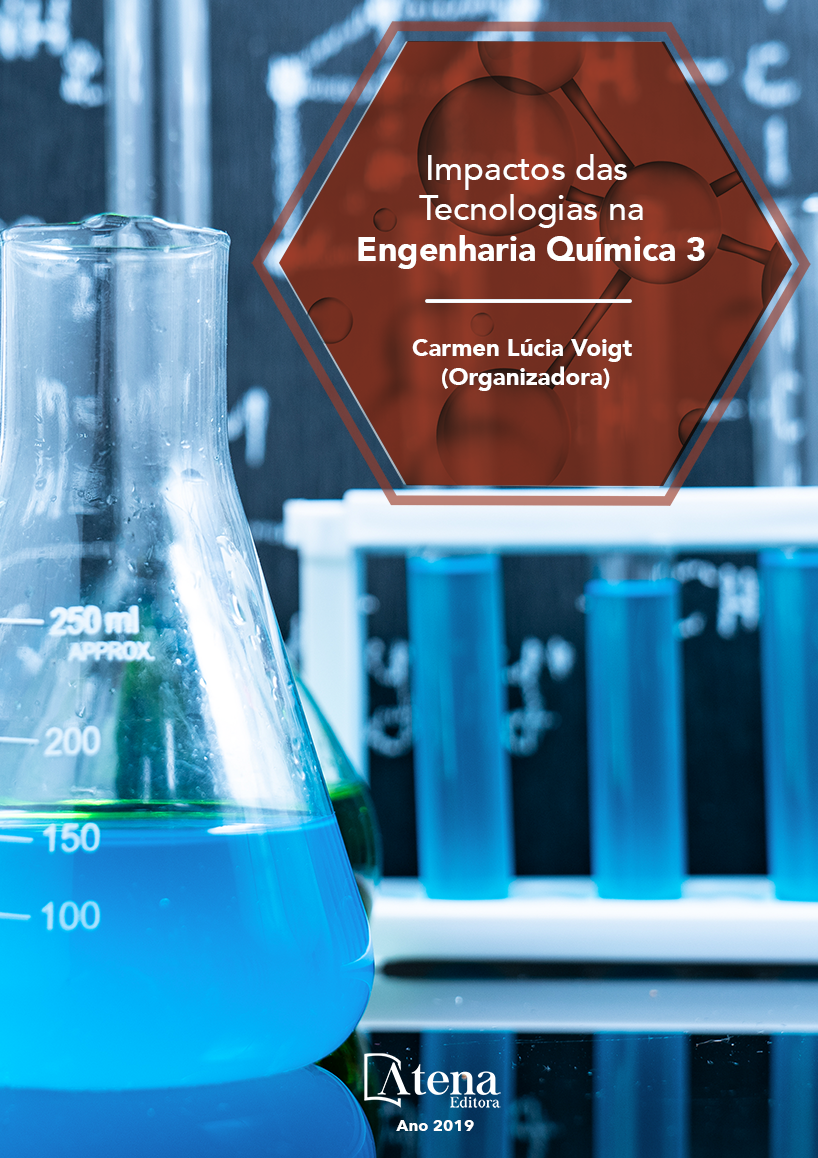
ESTUDO CINÉTICO DA REAÇÃO DE FENTON COM PÓ DE MINÉRIO NO TRATAMENTO DE ÁGUAS DE LAVAGEM DE BIODIESEL E AVALIAÇÃO DA LIXIVIABILIDADE DO RESÍDUO
Na produção de biodiesel através do
processo de transesterificação, há um grande
consumo de água no estágio de purificação
do produto e, portanto, deve-se pensar em
formas de reuso ou descarte deste efluente
gerado. Entretanto, só é possível realizar
tais alternativas após tratamento adequado,
estabelecido por norma, a fim de garantir que
o efluente não proporcione efeitos prejudiciais
ao corpo receptor, visando o menor impacto
ambiental possível. Com isso, neste trabalho,
realizou-se o tratamento do efluente utilizando
a reação de Fenton, que basicamente promove
a remoção de matéria orgânica por oxidação,
sendo os radicais hidroxila os principais agentes
do processo. Os radicais são produzidos pela
decomposição do peróxido de hidrogênio
(H2O2), na presença de catalisadores de íons de
ferro. Este tratamento levou à remoção de 90%
da matéria orgânica, e os dados experimentais
se ajustaram melhor ao modelo cinético
proposto por Chan e Chu (2003), obtendose
velocidade inicial de reação estimada em
1/ρ = 3,367 min-1. Com relação à lixiviação de
íons ferro provenientes do resíduo siderúrgico,
avaliou-se a influência da temperatura, tempo
de contato e da presença do H2O2 no processo.
Nesses ensaios, comprovou-se que há
variação da quantidade lixiviada com o tempo
e temperatura, porém não de forma linear e
crescente. Na presença de H2O2, observou-se
o aumento do teor de lixiviado (ferro ferroso),
na mesma temperatura e tempo de contato, em
ensaios apenas com água destilada.
ESTUDO CINÉTICO DA REAÇÃO DE FENTON COM PÓ DE MINÉRIO NO TRATAMENTO DE ÁGUAS DE LAVAGEM DE BIODIESEL E AVALIAÇÃO DA LIXIVIABILIDADE DO RESÍDUO
-
DOI: 10.22533/at.ed.31919010420
-
Palavras-chave: Efluente do biodiesel, Reação de Fenton, Pó de minério, Cinética, Lixiviação do ferro.
-
Keywords: Effluent of biodiesel, Fenton reaction, Ore powder, Kinetics, Leaching of iron. 1 | INTRODUÇÃO
-
Abstract:
In biodiesel production through
the transesterification process, there is a high
consumption of water in the stage of purification
of the product and, therefore, forms of reuse
or disposal of this generated effluent must be
investigated. However, these alternatives can
only be applied after appropriate treatment,
following the laws and normative procedures, in
order to reduce environmental impacts Thus, in
this work, the effluent was treated by the Fenton
reaction, which promotes the transformation of
organic matter by oxidation, having hydroxyl
Impactos das Tecnologias na Engenharia Química 3 Capítulo 20 158
radicals as the main agents responsible for the process. These radicals are produced
by the decomposition of hydrogen peroxide (H2O2) in the presence of iron ion catalysts.
The process lead to organic matter removal of 90%, and the collected data was better
adjusted to the kinetic model proposed by Chan and Chu (2003), with initial reaction rate
of 1/ρ = 3,367 min-1. Regarding the iron leaching to the aqueous medium, the influence
of temperature, contact time and H2O2 content in the process were evaluated. In these
tests, it was found that the amount of leachate varied with time and temperature, but not
in a linear and increasing manner. Concerning the presence of H2O2, it was observed
an increasing content of iron (Fe2+) in the solution containing hydrogen peroxide. This
behavior was not observed when the tests were carried out in distilled water, at the
same temperature and contact time.
-
Número de páginas: 15
- Jamyla Soares Anício Oliveira Félix
- Aline Givisiez de Souza
- Francine Duarte Castro


